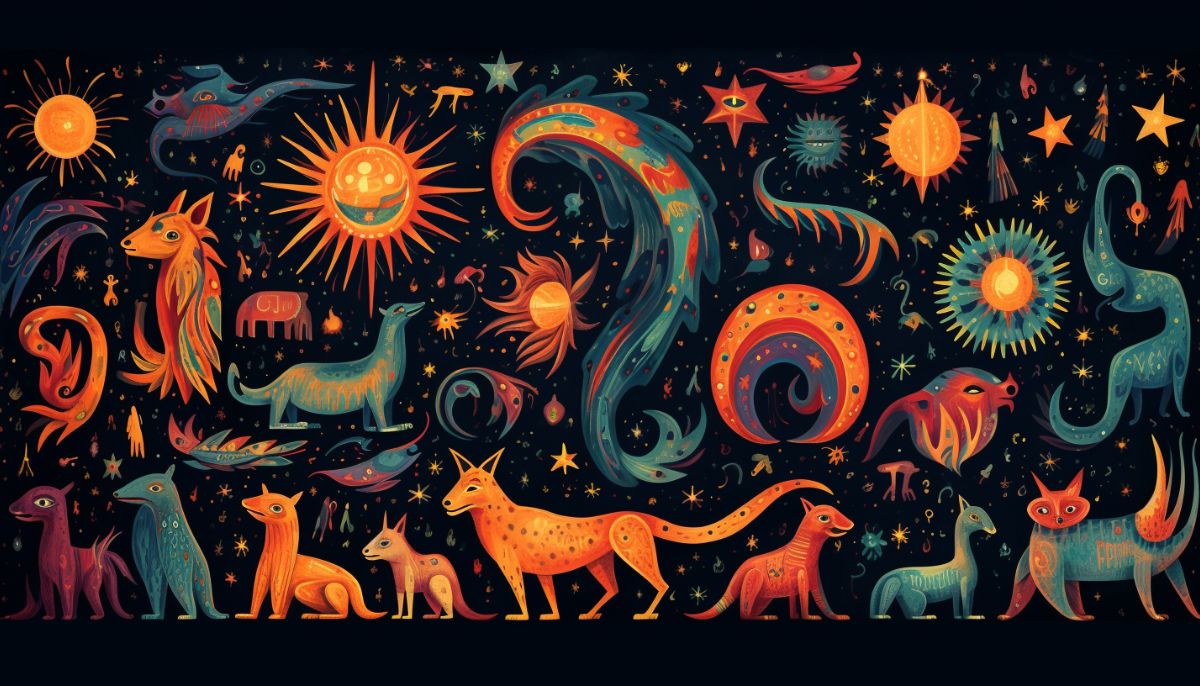In the pantheon of ancient Greek mythology, the Nemean lion emerges as a formidable adversary, its hide impervious to mortal weapons and its reign of terror unchecked.
This legendary beast played a central role in the Twelve Labours of Heracles, setting the stage for a confrontation to test the demigod’s strength and strategic prowess.
The tale of Heracles and the Nemean lion weaves a narrative of unparalleled courage and cunning, leaving an indelible mark on the annals of Greek heroic exploits.
The creation of the Nemean Lion
Born from the union of Typhon or Orthrus and Echidna, this leonine terror roamed the mountainous valley of Nemea, casting a shadow of dread over the land.
Hera, the queenly wife of Zeus, played a role in its creation, fostering it to bring turmoil to mankind. The lion’s reign of terror extended over Tretos, Apesas, and Nemeia, establishing it as a despotic ruler in its own right.
However, the indomitable Heracles, under the orders of Eurystheus, was tasked with the monumental challenge of vanquishing this formidable foe.
What did the Nemean lion look like?
The Nemean Lion was no ordinary beast. Towering and powerful, it was endowed with a hide impervious to conventional weapons. Neither iron, bronze, nor stone could pierce its formidable defenses, rendering it immune to the usual means of subjugation. This daunting attribute necessitated a battle of sheer strength and cunning.
Its lair, a double-mouthed cave near Tretos, served as a sanctuary and hunting ground. As the lion prowled the countryside, its squalid mane and ferocious visage bore the telltale signs of its gruesome feasts.
The creature’s eyes gleamed with a malevolent glint, and its snarl revealed a fearsome arsenal of teeth. When roused to fury, its spine arched like a drawn bow, signaling the impending onslaught. A mighty adversary, the Nemean Lion was a testament to nature’s most savage and awe-inspiring creations.
How big was the Nemean lion?
The Nemean Lion was said to be of enormous size, surpassing any common beast known to the lands of ancient Greece. Its dimensions and strength were so extraordinary that it became the stuff of legend, a testament to the monstrous nature of this leonine adversary.
Its invulnerable hide further emphasized this formidable aspect, which rendered it impervious to conventional weaponry. This impregnability and immense size made the Nemean Lion a uniquely daunting challenge for anyone who sought to face it in combat.
Nemean lion mythology
In the tapestry of Greek mythology, the Nemean lion is intricately woven with the exploits of the heroic demigod, Heracles. This monstrous creature was fated to become one of the Twelve Labours assigned to Heracles by King Eurystheus.
The Nemean lion and Heracles
In the rendition chronicled by Apollodorus, the saga of Heracles and the Nemean lion unfolds with vivid intensity. As the demigod embarked on his treacherous journey to confront this indomitable beast, he bore a meager arsenal: his wits, a club hewn from the stoutest of trees, and a bow, its string drawn taut with purpose.
Yet, despite the bravado of his weapons, the initial clash was disheartening. Each arrow launched with steely determination met a fate of futility, rebounding harmlessly off the creature’s impervious hide. The Nemean lion, shrouded in its invulnerability, stood as a daunting challenge to the mightiest of mortals.
In the crucible of battle, Heracles’ innate strategic brilliance came to the fore. With cunning born of desperation, he led the lion into a jagged cavern, its dark maw harboring two foreboding exits. Swift as thought, he blocked one portal, setting the stage for a lethal endgame.
How did the Nemean lion die?
Cornered and with escape thwarted, the lion faced the full fury of Heracles. The ensuing struggle was a maelstrom of violence and valor, as sinew strained against sinew in a test of raw might. The air crackled with the clash of titanic forces, and the cave’s walls bore witness to a contest of legends.
Ultimately, it was Heracles’ unyielding resolve that prevailed. With a vise-like grip, he throttled the lion, a testament to his unparalleled strength and indomitable will.
The once-mighty creature, vanquished and subdued, lay lifeless at the feet of the demigod. This monumental feat of strength and cunning marked the decisive end of the Nemean lion’s reign of terror, forever etching Heracles’ name into the annals of mythic glory.
Similar Greek monsters to the Nemean lion
The Nemean lion is one chapter in a compendium of formidable creatures that pepper the tapestry of Greek myth. From the cunning Sphinx, who guarded the gates of Thebes, to the multi-headed Hydra and the monstrous Chimera, each of these creatures posed unique challenges to heroes of old.
Their tales, much like that of the Nemean lion, continue to captivate and inspire, leaving an indelible mark on the rich mosaic of Greek mythology. Through the struggles and triumphs of these legendary encounters, a timeless message endures: in the face of seemingly insurmountable odds, the indomitable spirit and ingenuity of humanity will always find a way to prevail.
Want to know more about the creatures and monsters of Greek Mythology?

Explore more articles like this in our broader series on Greek monsters. To delve even deeper into the world of mythical creatures, be sure to check out our comprehensive hub article on the monsters of Greek mythology.






